Idea by
Michal Ziso
Call for ideas 2020
Fast World - Slow Architecture
Fast World - Slow Architecture
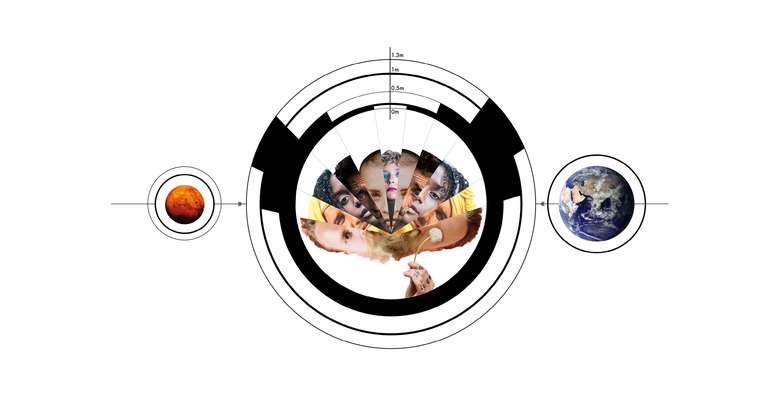
- New alliances
Earth is becoming similar to life in space than we realize, whether it is on Mars or the ISS for living, researching or space tourism, and so are its challenges. From diversity and human rights, to climate and land resources, functionality, growth of data and constant change, designing life in space can help us prepare for Earth’s future.
The Co-Era presents us with a major issue of the future built environment - compact space. On earth it is due to overpopulation or densifying- we are moving towards co-live, co-work and co-trasport. In space we create artificial habitats- the smaller the space, the easier it is to manage and control. When thinking of gender, ethnic and cultural diversity, the concept of personal space gets a whole new meaning.
We have to be consciously creating the next stage of human evolution, and thinking about space can help us get there quicker. Going back & forth from earth to space enables a quantum leap from earthly problems to space opportunities.

Fast World - Slow Architecture: The Frog Effect. They say that if you put a frog in a pot of gradually boiling water it will eventually die. But if you throw a frog into boiling water it will jump right out. In a world that changes exponentially, our prediction ability of the future is a challenging task since it’s hard for us to notice change. Only by getting a larger perspective like the one from space, or plan for life in extremely different conditions, we may be able to see things clearly.
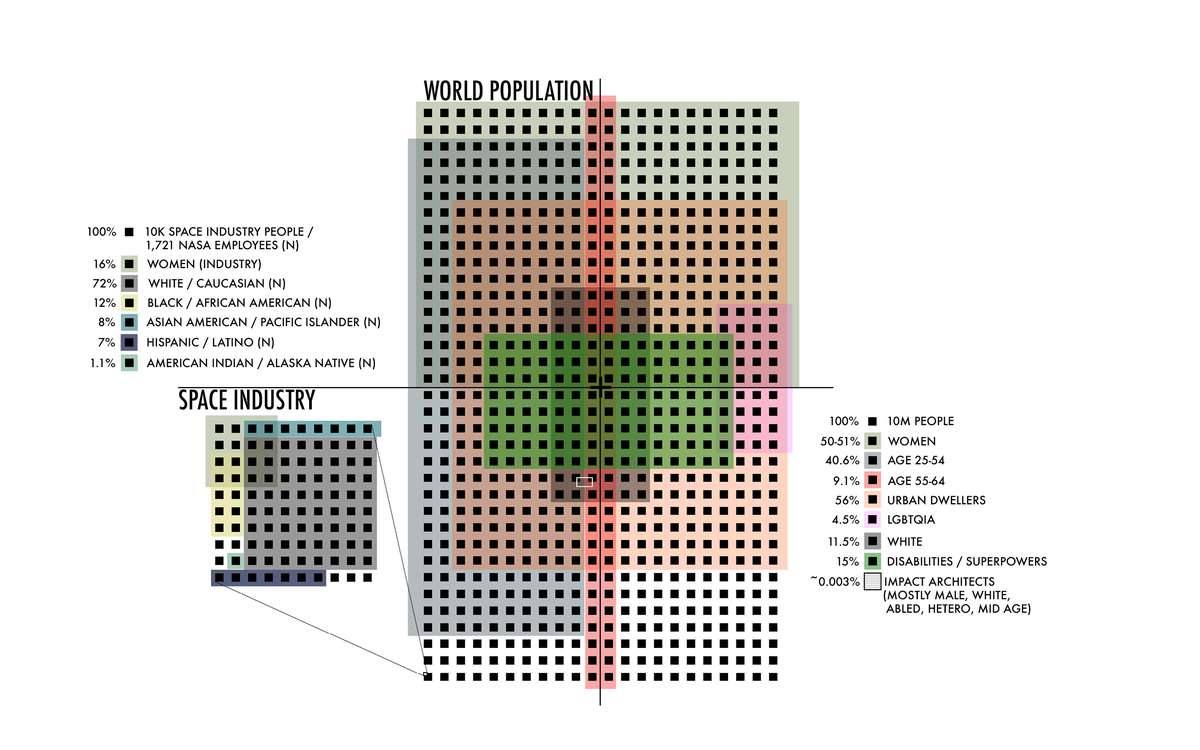
Earth and Space Planners By The Numbers. Demographics of architects compared to the populations they design for. Research shows that it is human nature to plan and design from self experiences and as one narrow demographic acts as the main planner and designer everyone is affected on a global scale. Today the number of international leading architecture firms led by women is 3 out of the top 100. The space industry, which is in charge of the future of humanity also depicts a diversity imbalance.
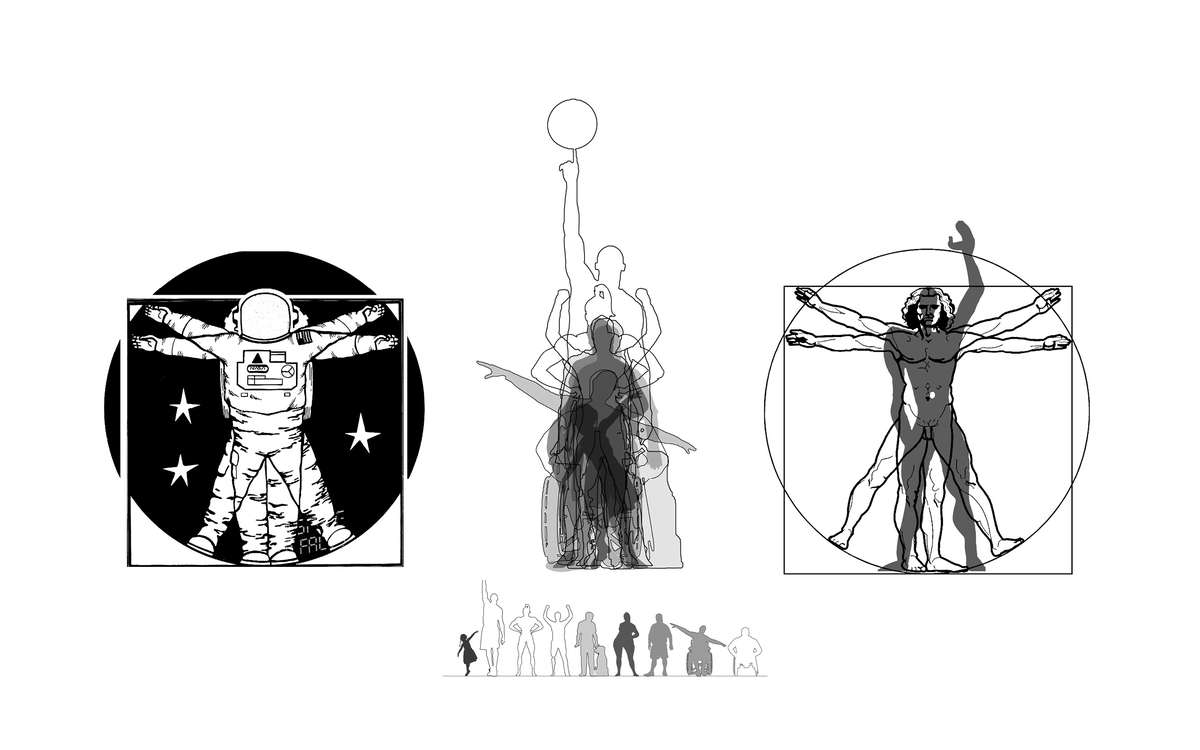
From Michelangelo’s Vitruvian Man to Le Corbusier’s Modulor and even to NASA’s own logo, there is a very one dimensional approach to human dimensions. Thinking about architecture in space brings up the question of whether earthly disabilities will transform into space superpowers? Shifting perspective from the normal average (fit, tall and abled man) vs. others to an equality driven architecture and flexible design may hold the key to a paradigm shift of our built environment.
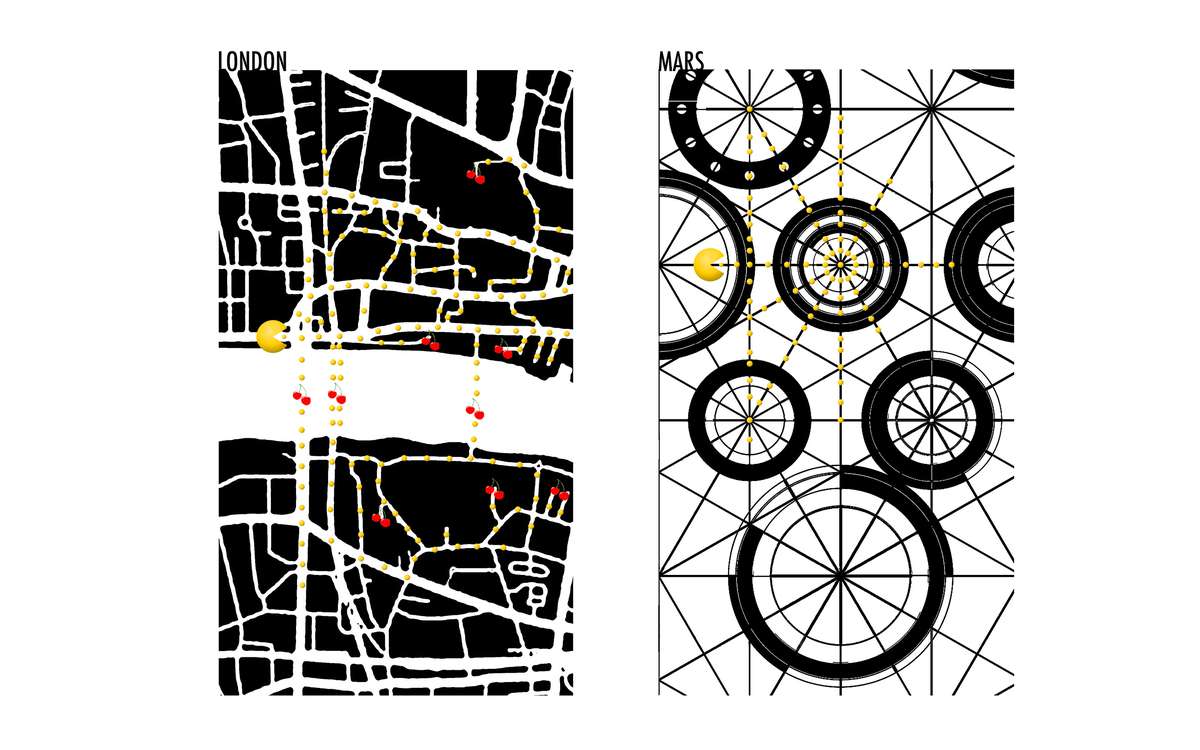
The streets of London VS a Martian colony as a game of PacMan. The radial geometry creates a utopian urban order in the way of equality, community and safety by elimination of dead ends and enabling clear view of squares and streets. When examining the built environment and behaviour of women, there is a strong connection between fear and sense of safety to the lack of use of certain parts of the urban space, showing that the structure of the city has the power to limit the freedom of movement.

Visual Overload. Much like sensory overload, occurring when senses experience over-stimulation from the environment, causing anxiety and even meltdowns, our built environment today contributes to a common global visual overload contributing to different forms attention deficits, influencing our functionality and wellbeing. In space we see this as functionality trumps aesthetics. The information era requires visual minimalism to ease our mental state, our efficiency and push humanity forward.
Fast World - Slow Architecture
Fast World - Slow Architecture

- New alliances
Earth is becoming similar to life in space than we realize, whether it is on Mars or the ISS for living, researching or space tourism, and so are its challenges. From diversity and human rights, to climate and land resources, functionality, growth of data and constant change, designing life in space can help us prepare for Earth’s future.
The Co-Era presents us with a major issue of the future built environment - compact space. On earth it is due to overpopulation or densifying- we are moving towards co-live, co-work and co-trasport. In space we create artificial habitats- the smaller the space, the easier it is to manage and control. When thinking of gender, ethnic and cultural diversity, the concept of personal space gets a whole new meaning.
We have to be consciously creating the next stage of human evolution, and thinking about space can help us get there quicker. Going back & forth from earth to space enables a quantum leap from earthly problems to space opportunities.
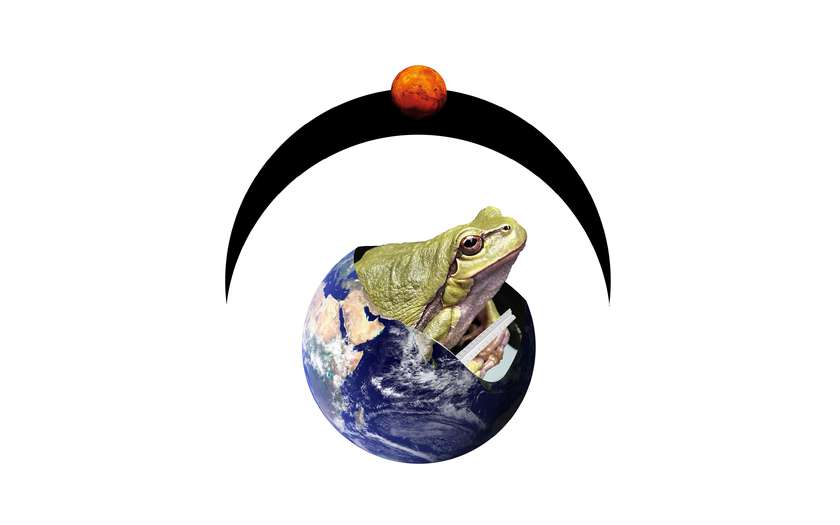
Fast World - Slow Architecture: The Frog Effect. They say that if you put a frog in a pot of gradually boiling water it will eventually die. But if you throw a frog into boiling water it will jump right out. In a world that changes exponentially, our prediction ability of the future is a challenging task since it’s hard for us to notice change. Only by getting a larger perspective like the one from space, or plan for life in extremely different conditions, we may be able to see things clearly.
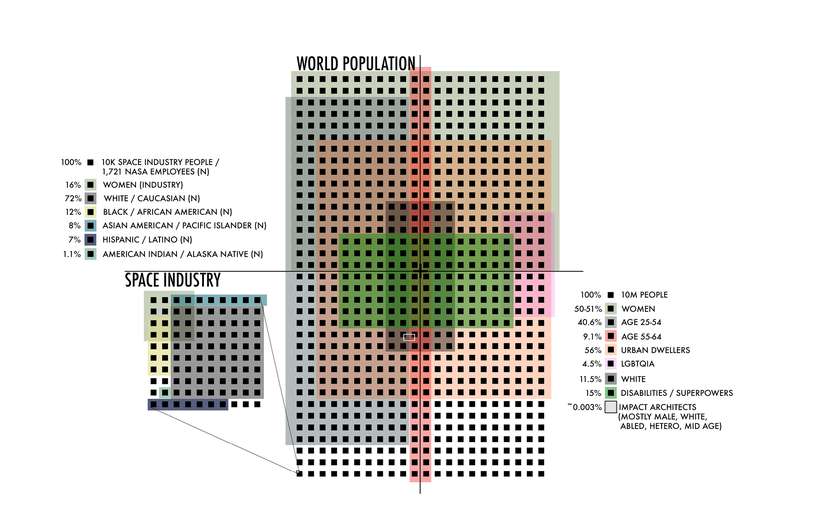
Earth and Space Planners By The Numbers. Demographics of architects compared to the populations they design for. Research shows that it is human nature to plan and design from self experiences and as one narrow demographic acts as the main planner and designer everyone is affected on a global scale. Today the number of international leading architecture firms led by women is 3 out of the top 100. The space industry, which is in charge of the future of humanity also depicts a diversity imbalance.
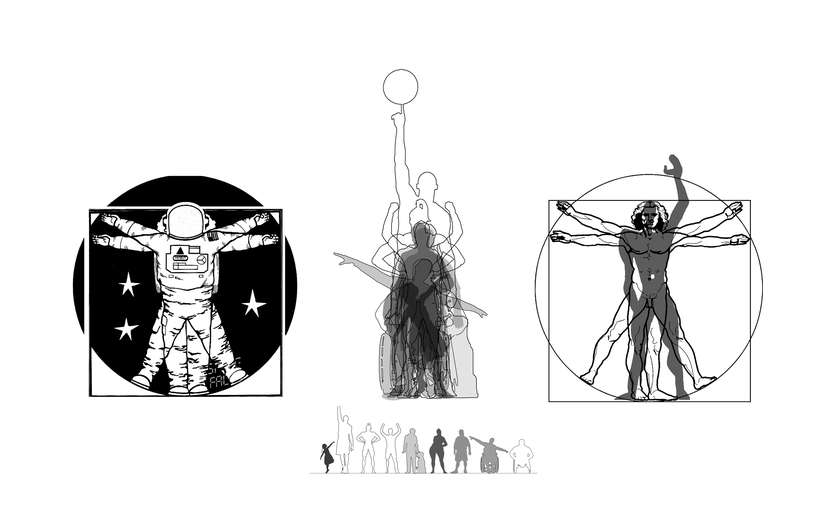
From Michelangelo’s Vitruvian Man to Le Corbusier’s Modulor and even to NASA’s own logo, there is a very one dimensional approach to human dimensions. Thinking about architecture in space brings up the question of whether earthly disabilities will transform into space superpowers? Shifting perspective from the normal average (fit, tall and abled man) vs. others to an equality driven architecture and flexible design may hold the key to a paradigm shift of our built environment.

The streets of London VS a Martian colony as a game of PacMan. The radial geometry creates a utopian urban order in the way of equality, community and safety by elimination of dead ends and enabling clear view of squares and streets. When examining the built environment and behaviour of women, there is a strong connection between fear and sense of safety to the lack of use of certain parts of the urban space, showing that the structure of the city has the power to limit the freedom of movement.

Visual Overload. Much like sensory overload, occurring when senses experience over-stimulation from the environment, causing anxiety and even meltdowns, our built environment today contributes to a common global visual overload contributing to different forms attention deficits, influencing our functionality and wellbeing. In space we see this as functionality trumps aesthetics. The information era requires visual minimalism to ease our mental state, our efficiency and push humanity forward.